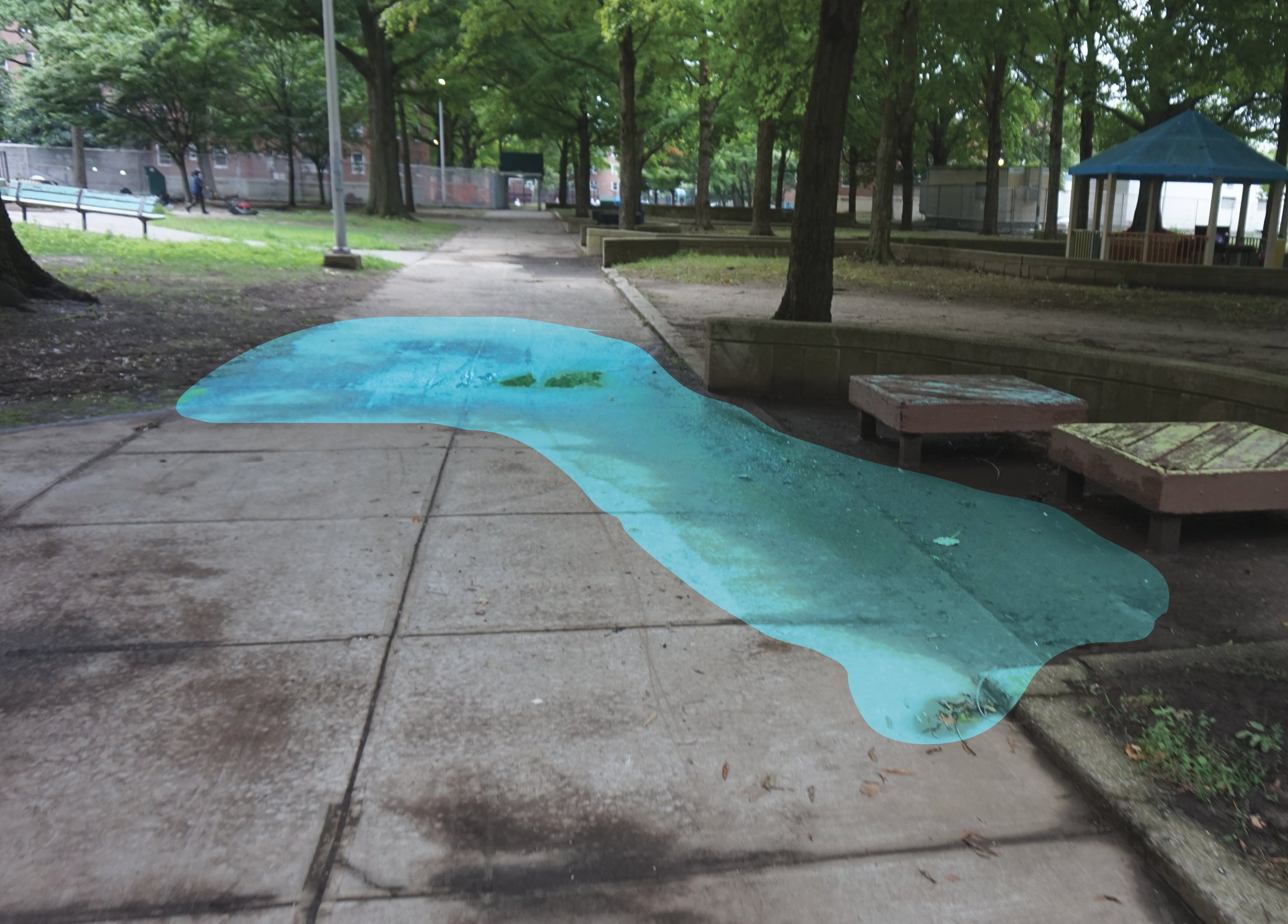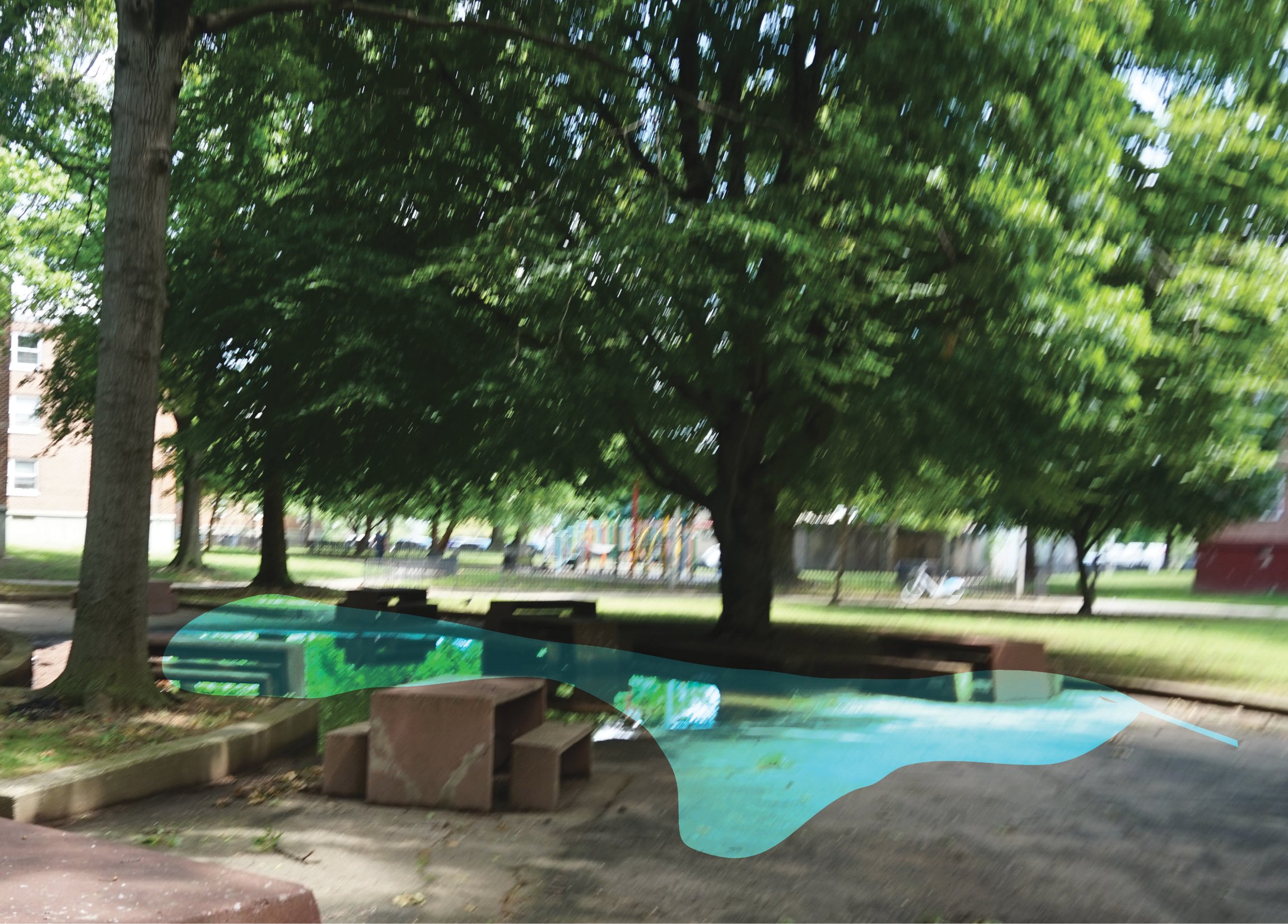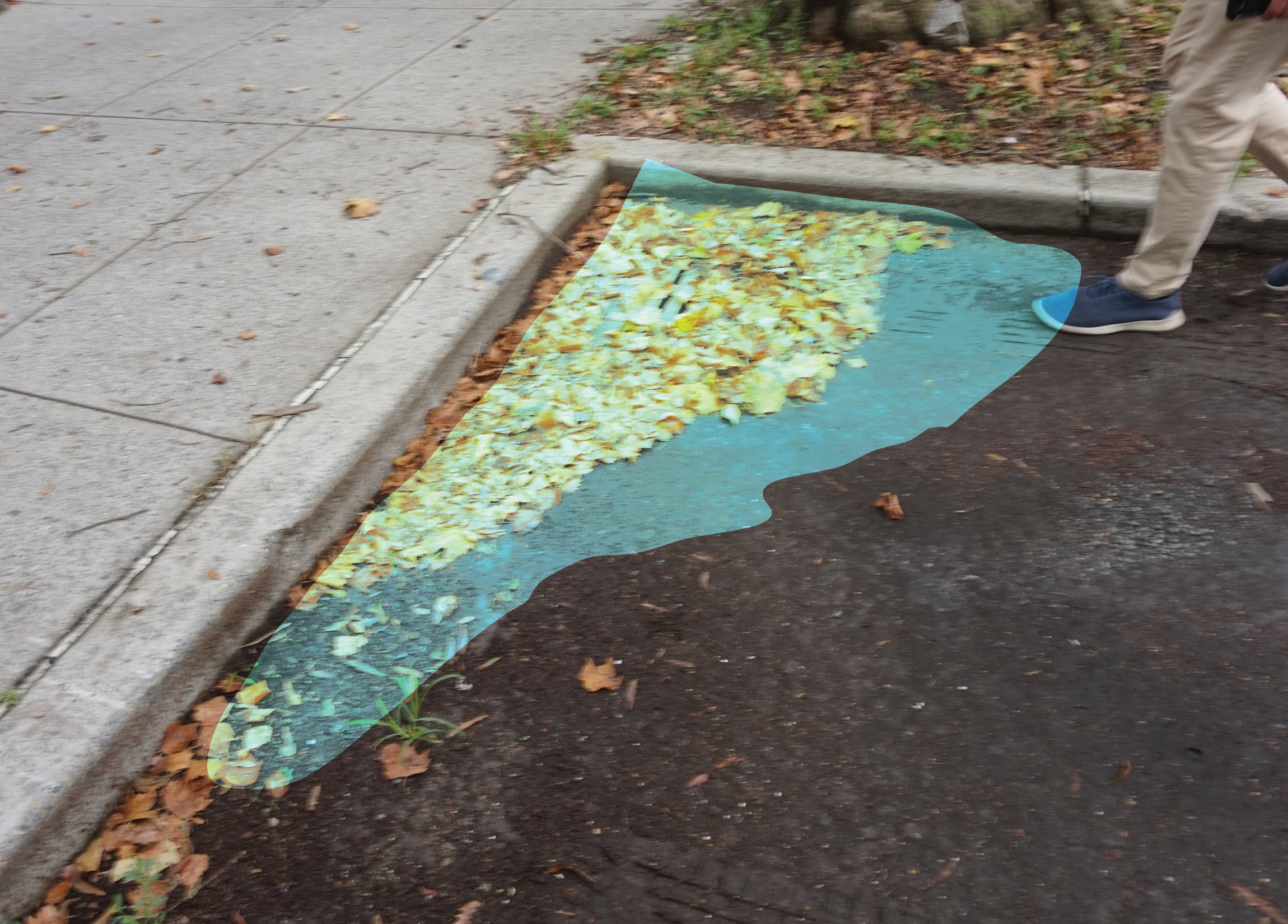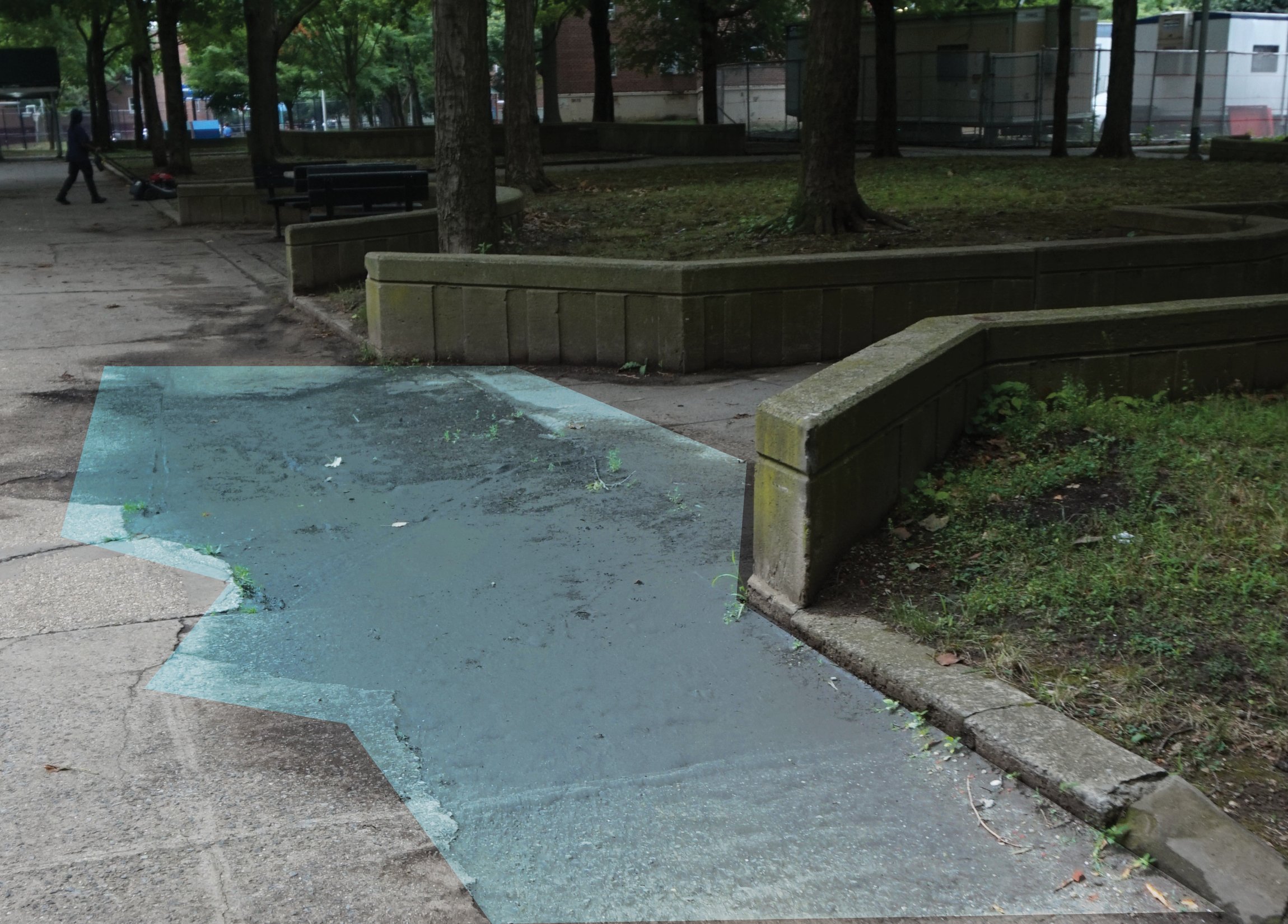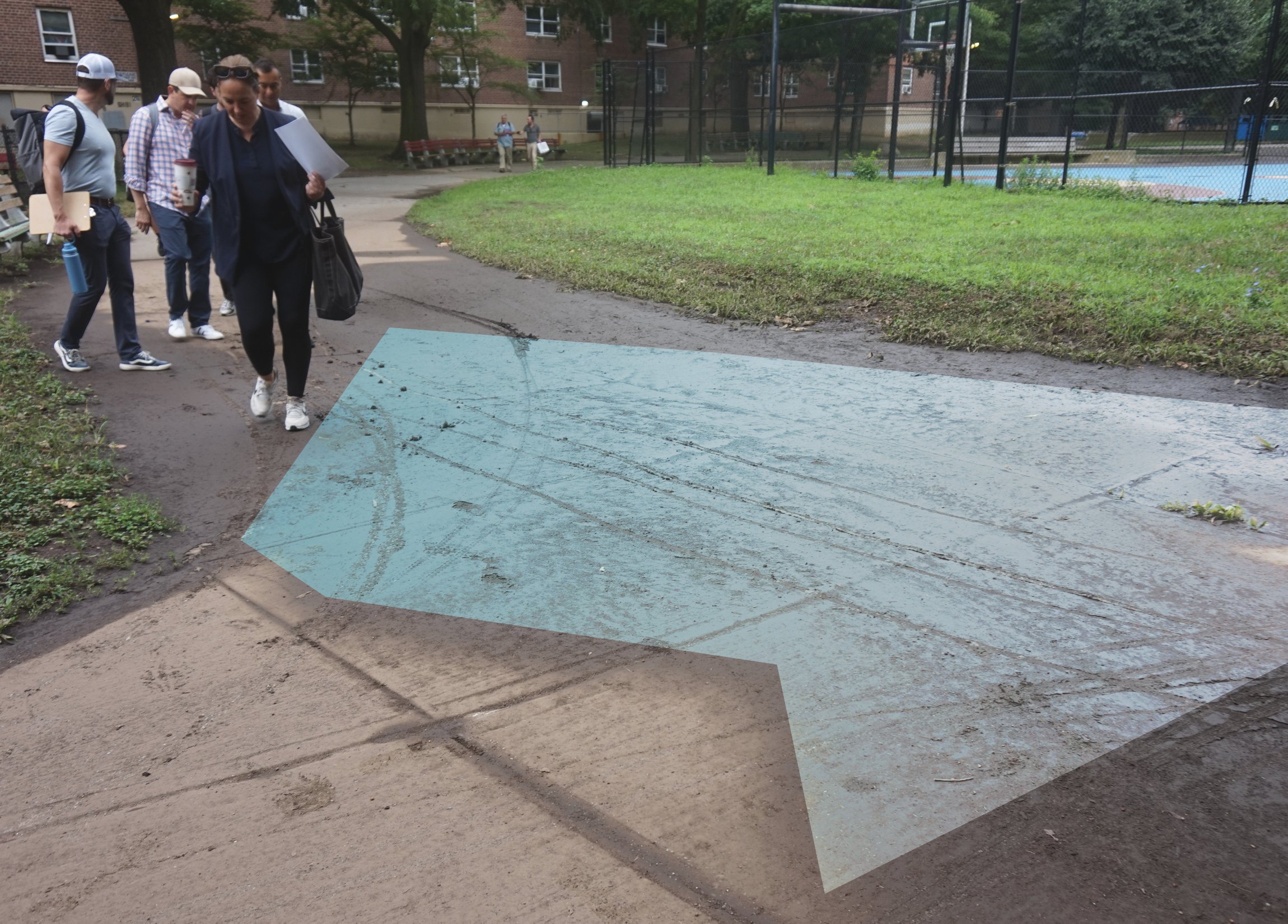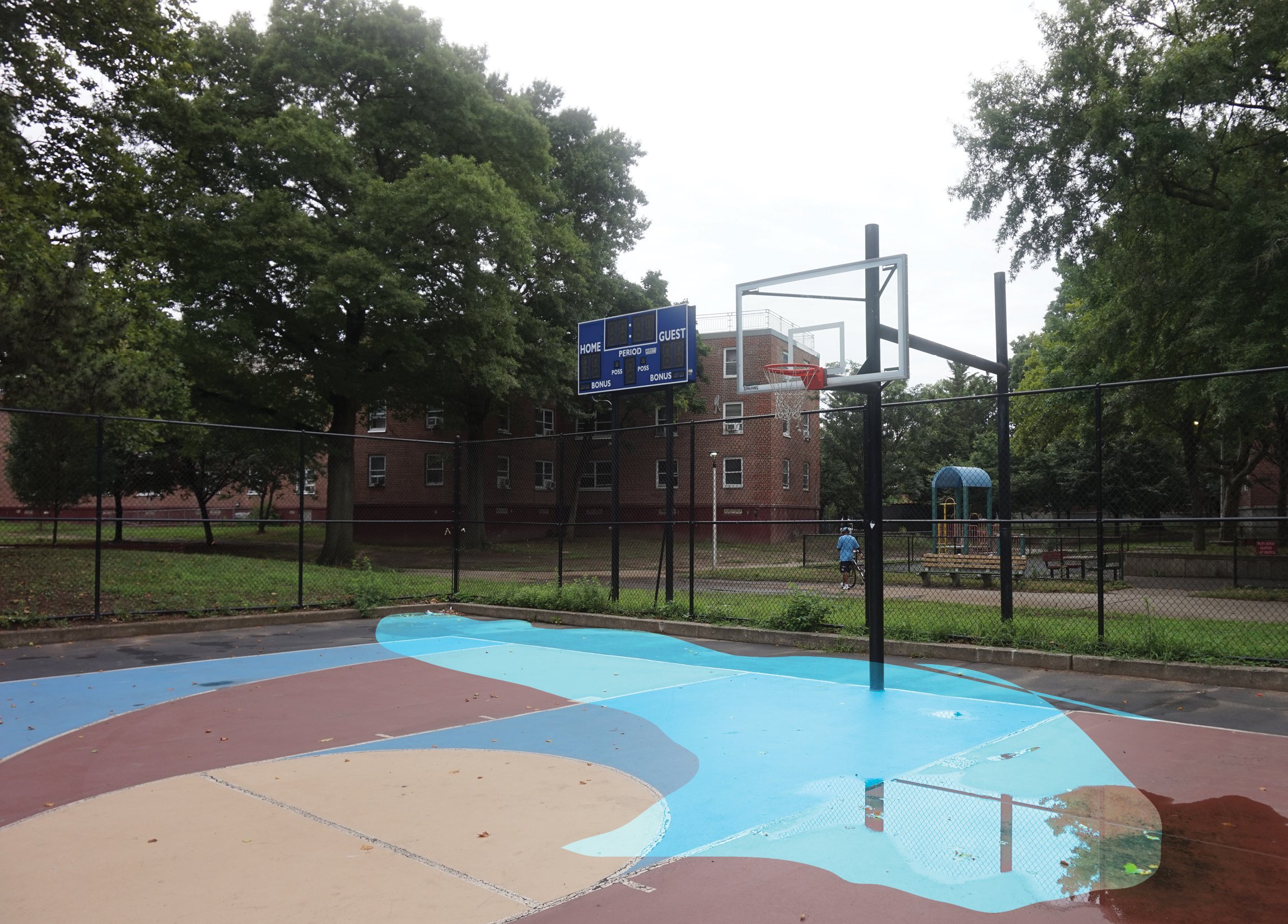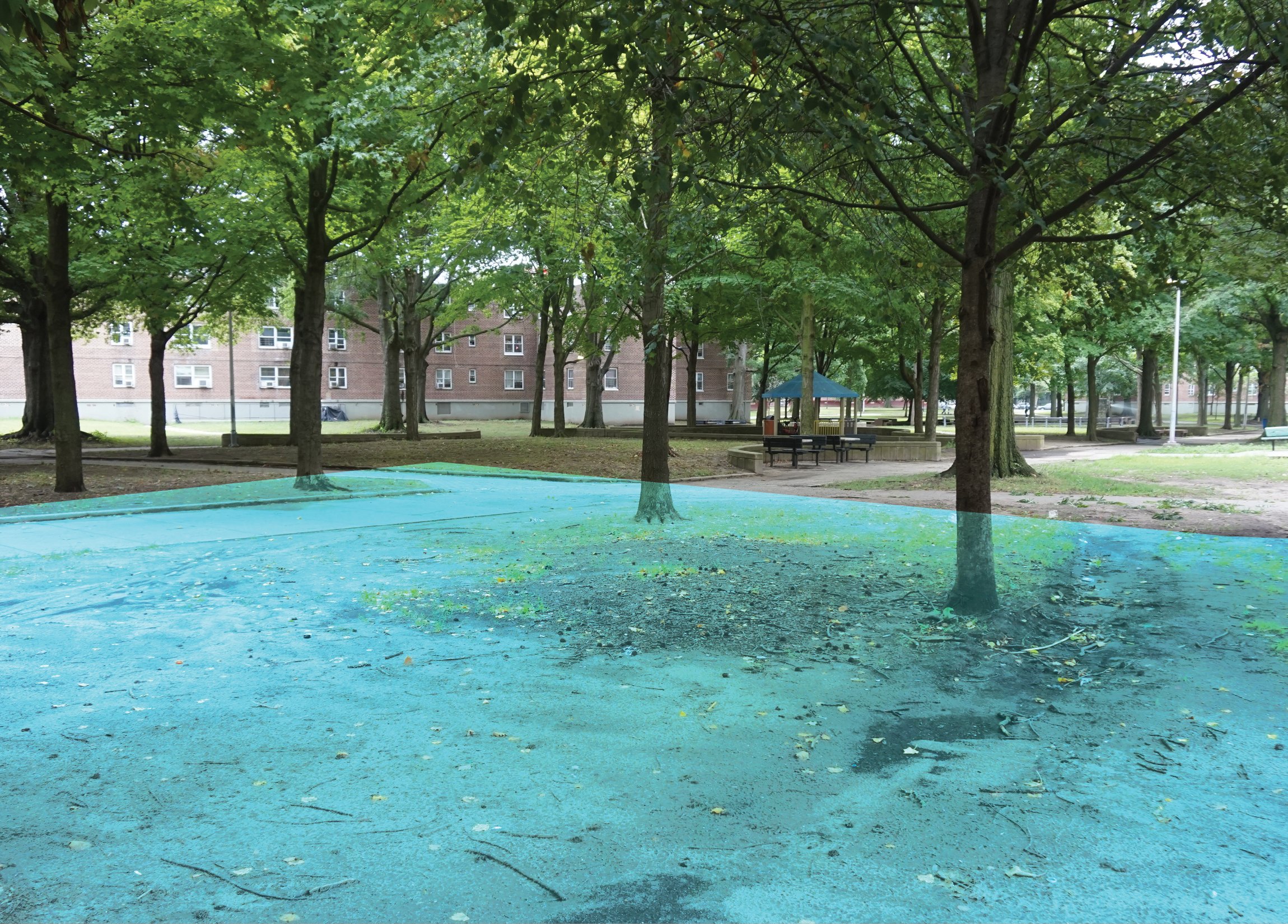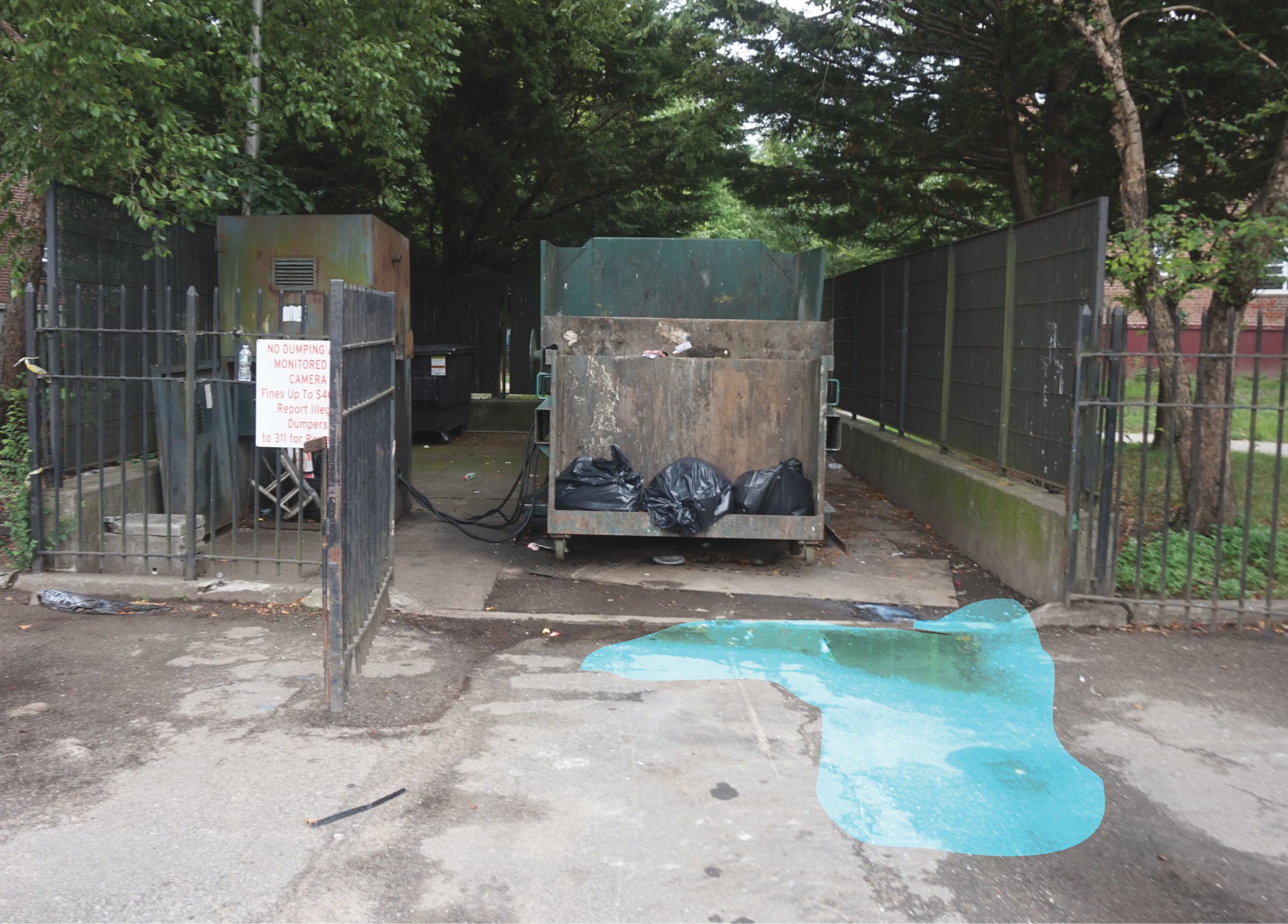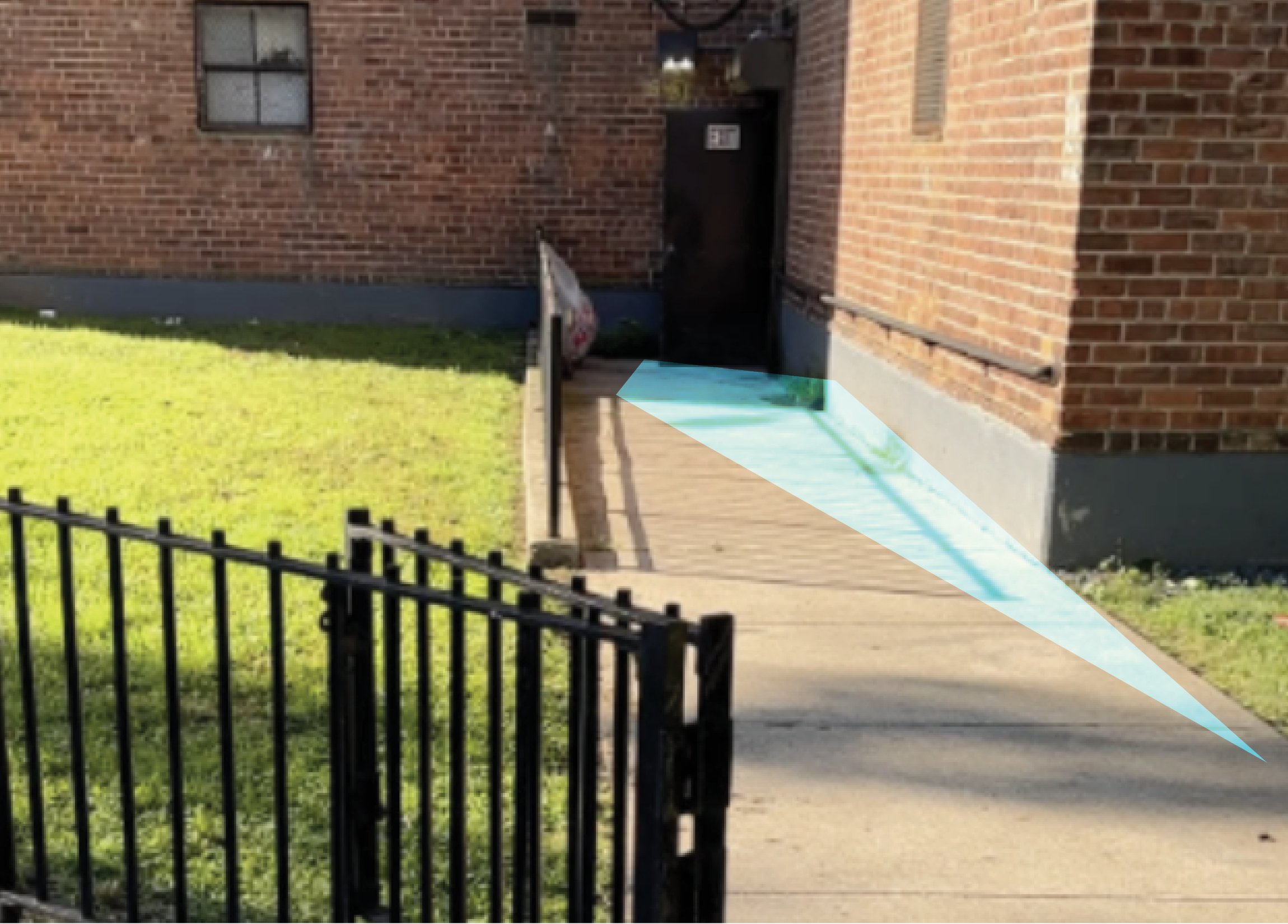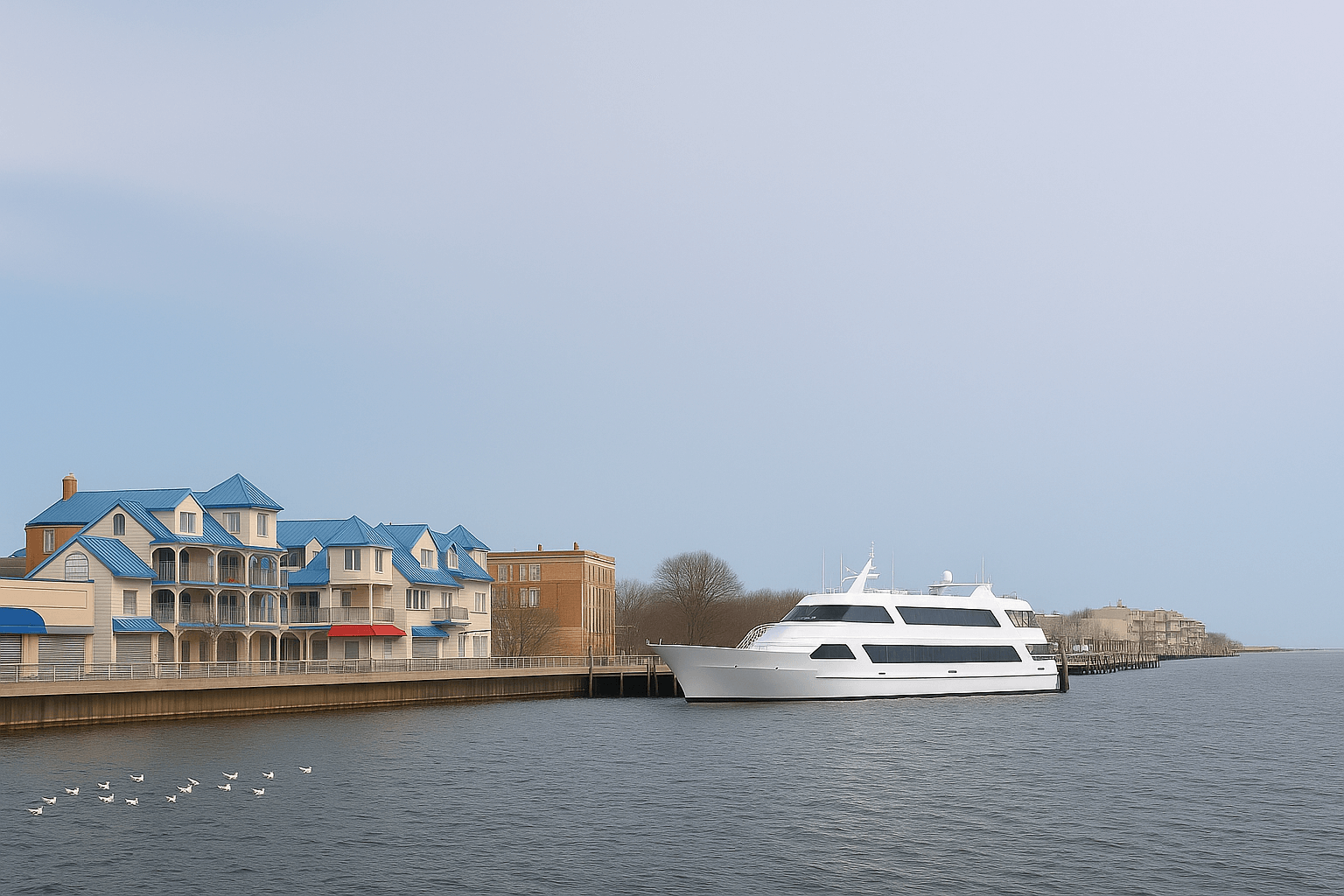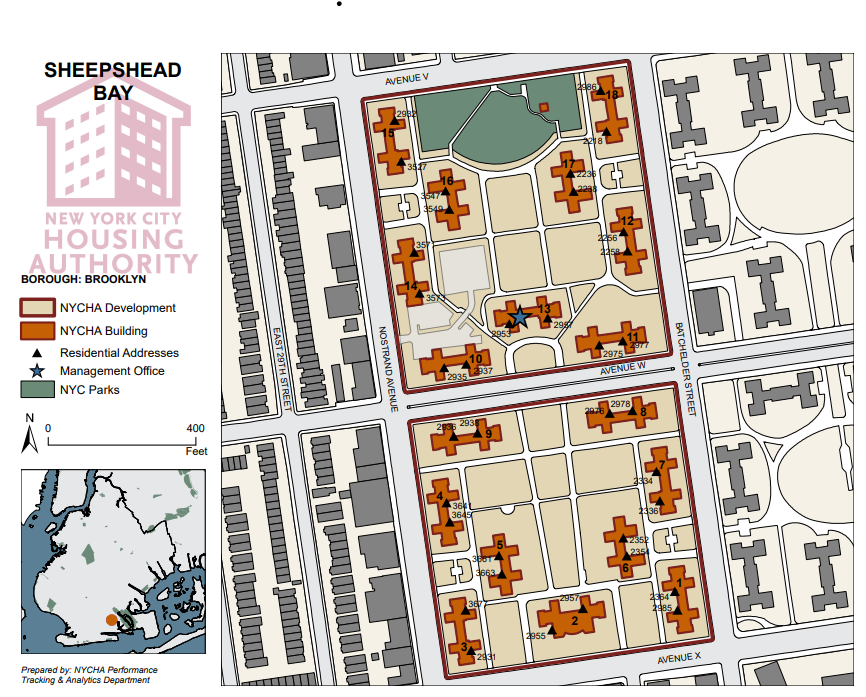About the project
Learn more >The project focuses on developing comprehensive Cloudburst Management at Breukelen Houses through nature-based solutions, hydrographic and topographic modeling, and community-driven stormwater management strategies. Aligned with New York City's broader infrastructure and climate resilience goals, the initiative emphasizes sustainability and resilience to support communities affected by extreme weather events. This project builds on studies initiated during the 2021 Building Resilient Infrastructure and Communities (BRIC) grant cycle, by refining previous research while integrating regional development practices and social considerations. With $19.8 million awarded through BRIC and an additional $14 million in city funding, the project aims to identify and implement targeted solutions that address the unique flood-related challenges at Breukelen Houses.
Existing Conditions
What is Cloudburst Management?
Cloudburst Management is a way of absorbing, storing, and transferring stormwater to minimize flooding from heavy rain events. Cloudburst Management uses a combination of grey infrastructure, like drainage pipes and underground tanks, and green infrastructure, like trees and rain gardens. During heavy rain events, Cloudburst Management can minimize damage to property and infrastructure by reducing pressure on the sewer system.
Capture and infiltrate first 1.25" of runoff
Our first defense focuses on detaining water in permeable surfaces, rain gardens, and bioswales that naturally absorb water.
Employ subsurface options once surface storage is fully saturated
When surface systems reach capacity, we engage subsurface storage solutions including underground detention tanks and reservoirs.
Storage is full and volumes must be directed offsite
During extreme events when storage capacity is exhausted, we implement controlled water pathways that direct excess water away from critical infrastructure and residential areas.
Leverage secondary floodable spaces and strategic infrastructural improvements
Our final tier utilizes designated secondary spaces that can temporarily handle excess water.

